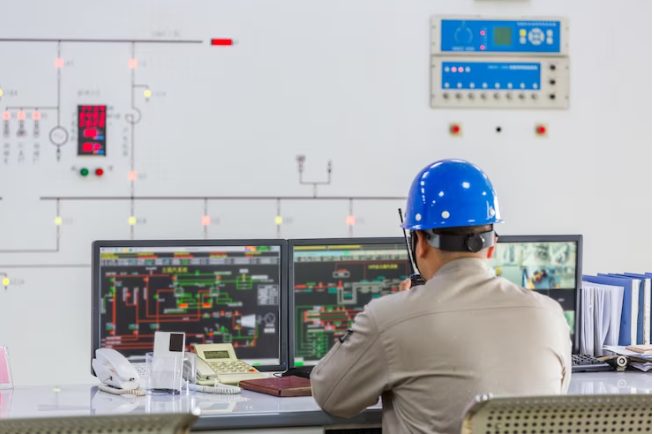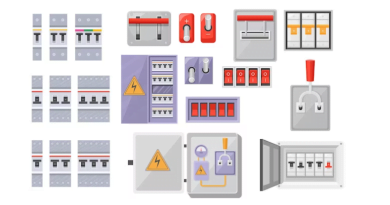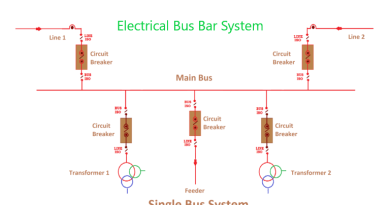What is Power System Stability and Its Effect on System
What is Power System Stability and Its Effect on the System
Introduction to Power System Stability
Power system stability refers to the ability of an electric system to regain a state of operating equilibrium after being subjected to a physical disturbance. Maintaining stability is crucial for secure and reliable power delivery. Instability can cause disruptive blackouts and equipment damage.
The reliability and functionality of an electrical power system are heavily reliant on power system stability. This critical aspect of power engineering ensures that the grid operates smoothly, preventing disruptive events like blackouts and voltage collapses. In this comprehensive guide, we’ll explore the concept of power system stability, its various types, the factors affecting it, and its profound effects on the electrical grid.
Understanding Power System Stability
Defining Power System Stability
Power system stability refers to the ability of an electrical grid to maintain a balanced and steady-state operation under various operating conditions and disturbances. It is a fundamental aspect of ensuring a secure and reliable power supply.
Importance of Stability in Power Systems
Stability is paramount in power systems, ensuring that generators, transformers, and transmission lines operate within safe limits. It prevents catastrophic events that could disrupt the power supply to homes, industries, and businesses.
Types of Power System Stability
- Transient Stability
Transient stability focuses on the ability of the power system to recover to a stable state following a severe disturbance, such as a fault or sudden load change.
- Small-Signal Stability
Small-signal stability deals with the system’s ability to maintain stability under small perturbations and oscillations, often measured by eigenvalues.
- Voltage Stability
Voltage stability pertains to maintaining acceptable voltage levels throughout the power system, preventing voltage collapses and dips.
There are three main classes of power system stability:
- Rotor Angle Stability
Involves oscillations in generator rotor angles due to imbalances between power input and output.
- Voltage Stability
This relates to the system’s ability to maintain steady, acceptable voltages after disturbances.
- Frequency Stability
Refers to maintaining the system frequency by balancing real power demand and generation.
Causes of Instability of Power System
Some common factors jeopardizing stability include:
- Faults or Disturbances
Events like short circuits, transformer taps, or lightning strikes.
- Load Variations
Large changes in load can impact voltage and frequency.
- Improper Equipment Settings
Inadequate voltage regulator, governor, or relay settings.
- Inadequate Compensation
Insufficient reactive power compensation causes voltage issues.
Effects of Power System Instability
Stability problems have severe impacts on the grid:
- Voltage Collapse
Uncontrolled voltage drop that can propagate, requiring load shedding.
- Cascading Outages and Blackouts
Localized collapses can sequentially spread across the entire grid.
- Equipment Damage
Instability subjects equipment to thermal stress, vibration, and torque oscillations.
- Disruption of Supply
Interruption of power supply leads to economic losses and service impacts.
Methods to Improve Power System Stability
Various techniques enhance power system stability:
- Generator Excitation Control
Fast-acting voltage regulators help maintain steady voltage during disturbances.
- Power System Stabilizers (PSS)
Suppresses generator rotor oscillations by modulating excitation.
- Flexible AC Transmission Systems
Power flow controllers adapt the transmission to changing stability conditions.
- Load Shedding Schemes
Strategic, controlled disconnection of loads helps stabilize large disturbances.
Methods for Enhancing Power System Stability
- Generator Control Strategies
Advanced control strategies for generators can help maintain stability by adjusting generator output and reactive power.
- Load Shedding and Compensation
Load-shedding techniques and compensation mechanisms can help balance the system during disturbances.
- Fault Detection and Isolation
Rapid fault detection and isolation schemes prevent faults from propagating and destabilizing the entire system.
Technological Advances in Power System Stability
- Wide-Area Monitoring Systems (WAMS)
WAMS uses real-time data across the grid to provide better visibility and control over system stability.
- Distributed Energy Resources (DERs)
DERs, such as renewable energy sources energy and storage, can enhance grid stability by providing distributed power sources.
Challenges and Future Trends
- Integration of Renewable Energy
Maintaining stability becomes more complex and critical as the grid incorporates more renewable energy sources.
- Cybersecurity Concerns
The increasing connectivity of power systems introduces cybersecurity risks that must be addressed to protect critical infrastructure.
Conclusion
Power system stability is vital for a reliable electricity supply. Assessing stability through simulations and implementing controls and strategies to withstand disturbances enhances security. With proper design and operation, blackouts related to instability can be minimized. Power system stability is the linchpin of a reliable and secure electrical grid. It ensures electricity is delivered efficiently without disrupting homes, industries, and businesses. Understanding the types of stability, the factors affecting it, and the methods for enhancing it is crucial as we navigate an evolving energy landscape.
Frequently Asked Questions (FAQs)
- What is the primary role of power system stability?
- Power system stability ensures electrical grids’ reliable and secure operation, preventing disruptions like blackouts.
- Why is transient stability important in power systems?
- Transient stability is essential as it allows the power system to recover after severe disturbances and faults.
- How do generator characteristics impact power system stability?
- Generator characteristics, including inertia and control systems, are crucial in maintaining stability during disturbances.
- What are some effects of voltage instability in power systems?
- Voltage instability can lead to voltage collapses, resulting in blackouts and equipment damage.
- What is the role of Wide-Area Monitoring Systems (WAMS) in power system stability?
- WAMS provides real-time data from across the grid, improving visibility and control over system stability.
- How can distributed energy resources (DERs) enhance power system stability?
- DERs, such as renewable energy sources and energy storage, provide distributed power sources, enhancing grid stability.
- What are some future trends in power system stability?
- Future trends include integrating renewable energy and addressing cybersecurity concerns in connected power systems.
- What are load-shedding techniques, and how do they help maintain power system stability?
- Load shedding techniques involve controlled reduction of load to prevent system instability during disturbances.
- What are some challenges associated with integrating renewable energy into power systems regarding stability?
- Integrating renewable energy sources can introduce variability and uncertainty, requiring advanced control strategies for stability.
- Why is cybersecurity a concern in power system stability?
- The increasing connectivity of power systems makes them vulnerable to cyberattacks, necessitating robust cybersecurity measures to protect critical infrastructure.
11. What types of models are used to study stability?
Typical models include swing equations for rotor dynamics, Heffron-Phillips for synchronous machines, and Zbus impedance modeling.
12. How are voltage and rotor angle stability related?
Angle instability leading to collapse can propagate voltage collapse. Voltage collapse also impairs generators’ angular stability margins.
13. What timeline do the different types of stability act on?
Rotor angle stability acts on the order of seconds. Voltage stability is in the 1-10 second range. Frequency acts over minutes to hours.
14. How does reactive power affect stability?
Insufficient reactive power reduces voltage stability margins. Dynamic reactive support enhances voltage stability and allows heavier power transfers.
15. What are some ways to maintain frequency stability?
Fast-acting automatic generation controls, load shedding, sufficient spinning reserves, and pumped storage respond to frequency deviations.
16: What is power system stability?
A: Power system stability is the ability of an electric power system to maintain a state of operating equilibrium under normal operating conditions and to regain an acceptable state of balance after being subjected to a disturbance.
17: What are the types of power system stability?
A: There are three main types of power system stability: transient stability, voltage stability, and frequency stability.
18: What are the effects of power system instability?
A: Power system instability can lead to blackouts, equipment damage, and reduced reliability.
19: How can power system stability be improved?
A: Power system stability can be improved by investing in new generation and transmission infrastructure, implementing advanced control systems, and interconnecting with other power systems.
20: What is the role of power system stability in the transition to a clean energy grid?
A: Power system stability is essential for the reliable operation of the grid, including a grid increasingly powered by renewable energy sources. Renewable energy sources, such as solar and wind, are intermittent and variable, posing challenges to power system stability. However, several technologies and strategies can be used to maintain power system stability in a grid powered by a high share of renewable energy.
21: What are some examples of power system instability events?
A: Some examples of power system instability include the Northeast blackout in 2003 and the California energy crisis in 2000 and 2001.
22: How can consumers help to improve power system stability?
A: Consumers can help improve power system stability by reducing their peak-hour electricity consumption and participating in demand response programs.




